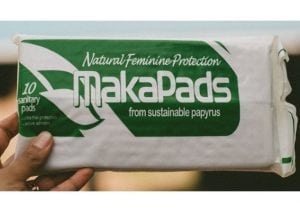
Agriculture
February 21, 2024
EcoSmart Pads
Read SolutionImplemented by
EcoSmart

Updated on February 5, 2024
·Created on August 27, 2015
ZanaAfrica pads are sanitary pads which is distributed to girls for free through local organizations.
Zanaafrica Pads are eco-friendly pads manufactured in Kenya. ZanaAfrica has created two lines of sanitary pads. Safi pads target women and girls that purchase pads, while Nia pads are distributed to girls for free through local organizations. However, as of 2020, Nia seems to be the only brand sold.
Target SDGs
SDG 3: Good Health and Well-Being
SDG 5: Gender Equality
Market Suggested Retail Price
$0.75
Target Users (Target Impact Group)
Household
Distributors / Implementing Organizations
Instead of solely stocking its products at large vendors, ZanaAfrica leverages established NGO partnerships with groups like Living Goods to deploy door-to-door saleswomen. Through these representatives, ZanaAfrica reaches women and girls in small towns and remote communities.
Regions
East Africa
Countries
Kenya
Manufacturing/Building Method
ZanaAfrica Group is a Kenyan-based social enterprise which claims to manufacture the sanitary pads and related products designed for and by women. ZanaAfrica Group uses local agricultural by-products to promote sustainability of the distribution system, without dependency on foreign imports. Experts have questioned the manufacturing capability availability in the region as fairly complex equipment is required, e.g. to apply the colored sides and the high resolution embossing.
Intellectural Property Type
Trade Secret
User Provision Model
The sanitary pads are distributed through NGO partnerships which deploy door-to-door saleswomen, along with stocking products at some large vendors. ZanaAfrica does sell termly school kits that consist of 32 pads (four 8-packs in both Regular and Super) and cotton underwear designed to accommodate all body types. This provides girls with safe, hygienic sanitary pads throughout the school term. To encourage continuity of product distribution, the ZanaAfrica Foundation creates girl-led reproductive health education resources and fosters long-term relationships with community-based organizations and NGOs who purchase termly kits on behalf of girls.
Distributions to Date Status
From 2013, ZanaAfrica's community-based sales have been reached 50,000 girls.
Absorbency types
Regular
Absorbent base materials
Local agricultural materials
Usability Features
N/A
Design Specifications
Zana africa pad is 100% organic cotton pads which is same as biodegradable cotton sanitary napkins. The pad is also chemical free, for sensitive skin.
Technical Support
N/A
Replacement Components
N/A
Lifecycle
This product is promoted as good for up to eight hours, though good sanitary measures are encouraged and variable by user.
Manufacturer Specified Performance Parameters
Designer specified performance targets include: high absorbency, and low-cost
Vetted Performance Status
Testing by manufacturer
Safety
The pads shouldn't be used more than 8-10 hours.
Complementary Technical Systems
N/A
Academic Research and References
Jeniffer, K B., 2019, Innovative Ways of Dealing With Menstrual Health Among the Marginalized Communities in Kenya. Advances in Social Sciences Research Journal, 6, pp. 256-274
Tull, K., 2019, Period Poverty Impact on the Economic Empowerment of Women. K4D Helpdesk Report
Mag, E., et al., 2017, Acceptability and Performance of the Menstrual Cup in South Africa: A Randomized Crossover Trial Comparing the Menstrual Cup to Tampons or Sanitary Pads. Journal of Women’s Health., Vol. 24.
Zana Africa. “Kenyan-Based ZanaAfrica Creates Affordable Sanitary Pad with High Quality.” News Medical Life Science, June 19, 2019.
Compliance with regulations
N/A
Other Information
ZanaAfrica has entered into 14 public and private partnerships, which are increasing distribution channels, raising visibility, and enhancing research capabilities. ZanaAfrica is now aiming to include educational comics with their pads to promote reproductive health and menstrual hygiene education.
Experts have questioned the financials that enable to ZanaAfrica to sell the pads at low cost and whether subsidies or donations are applied. The design with wings indicates significant design waste in production, which normally increases the cost. Also the construction seems to be quite complex, with several raw materials (rolled goods like cover, barrier etc.) being used. Most of these raw materials are not produced in Africa, in particular the cover materials.

Agriculture
February 21, 2024
Implemented by
EcoSmart

Agriculture
December 18, 2023
Implemented by
Eco Femme

Agriculture
December 19, 2023
Implemented by
MakaPads

Agriculture
February 5, 2024
Implemented by
Saathi

Agriculture
December 18, 2023
Implemented by
Sustainable Health Enterprise (SHE)

Agriculture
June 23, 2024
Implemented by
Nexleaf

Agriculture
June 24, 2024
Implemented by
Nexleaf

Agriculture
November 22, 2024
Implemented by
Appropriate Energy Saving Technologies Limited (AEST)

Agriculture
February 5, 2024
Implemented by
Centre for Vision in the Developing World

Agriculture
February 20, 2024
Implemented by
Intellectual Ventures Lab
Have thoughts on how we can improve?
Give Us Feedback
Can other fuels be used, or are only the pellets recommended by the manufacturer encouraged?